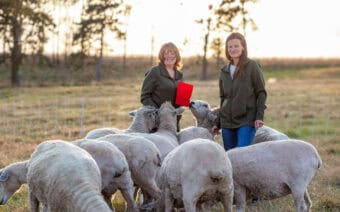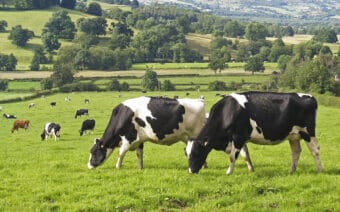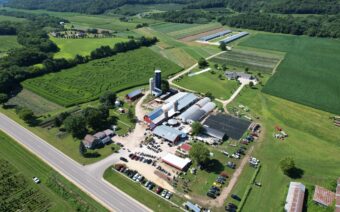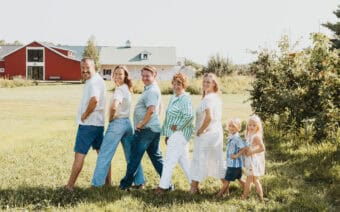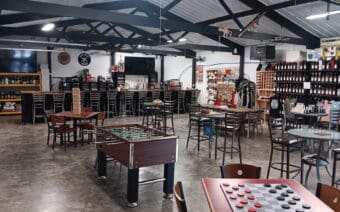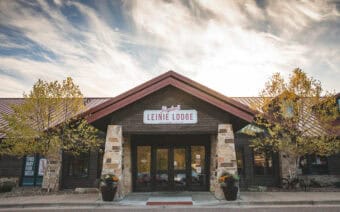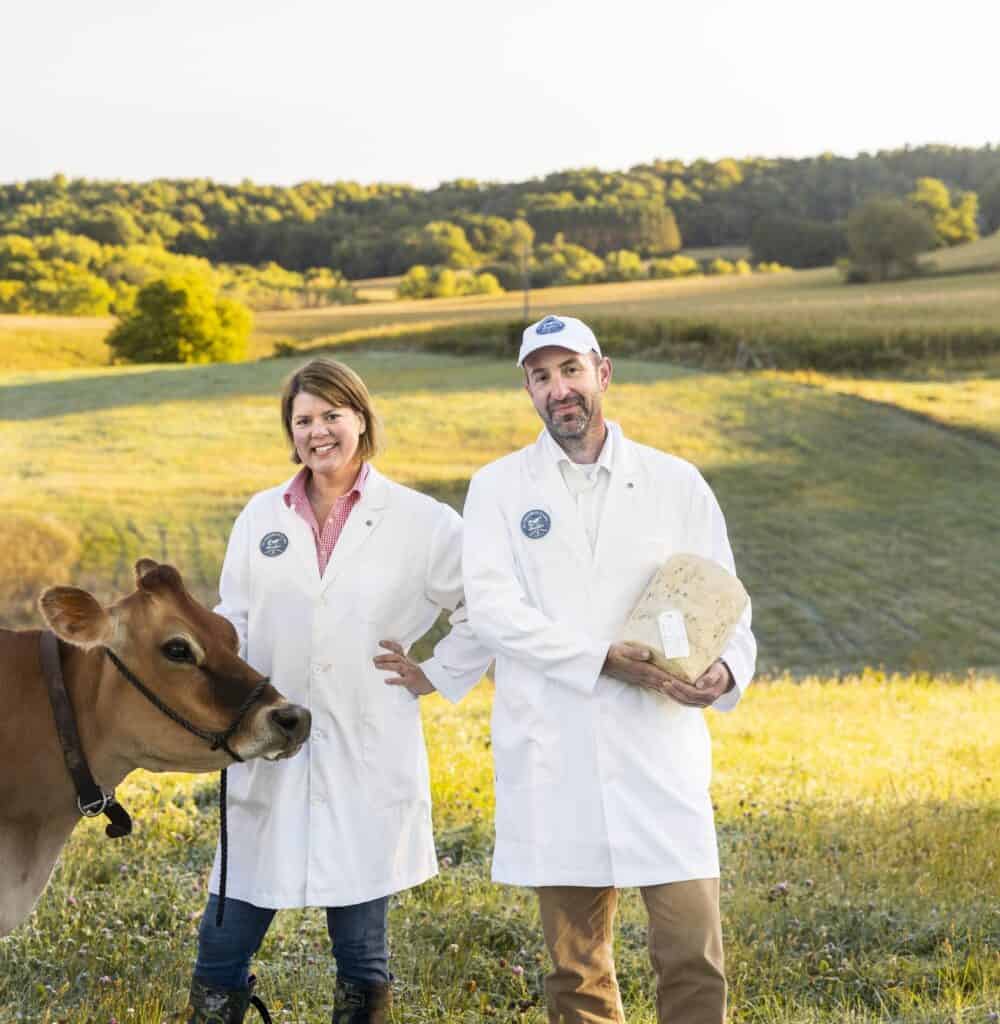
May 26, 2025
OSSEO – From the Evergreen State to the Badger State, Inga Orth said she has had quite the journey in the dairy industry.
Currently living on a 28-acre dairy farm in Osseo, she and husband, Chance, own/operate St. Isidore’s Dairy.
Orth said St. Isidore’s Dairy focuses on crafting small batches of clothbound cheddar – a type of cheddar aged in a cloth bandage that enhances its flavor and texture – using the milk collected twice daily from its six Jersey cows.
“I am a fourth-generation dairy farmer from Washington State,” she said. “Chance is a native of Eau Claire and has strong ties to dairy farming through his mother.”
Together, the couple serve as the farmers and cheesemakers behind St. Isidore’s Dairy’s farmstead cheese.
1,800 miles away…
Orth said she is the first generation of her family to start her own farm in Wisconsin, but her dairy-farming heritage goes back several decades.
She said her great-grandfather was the first of the family to start a dairy farm in Washington.
“My great-grandfather was in the business of milking cows and delivering his milk to people,” she said. “My grandfather and dad were also dairy farmers who sold milk to a creamery. It’s important for me to carry on that tradition. I’m able to bring that processing back to the farm just like my great-grandfather.”
Orth said many people don’t think of the area around Seattle as a good farming region.
“In the area (where) I grew up, I think it’s the No. 1 place to grow beet seeds and cabbage seeds,” she said. “It also has a huge cut flower industry and a lot of bigger dairy farms. The area is also huge for growing potatoes.”
In the 1990s, Orth said the Puget Sound area of Washington saw the dairy industry “crash.”
“Quite a few of those dairy farm families ended up moving to Barron County, Wisconsin,” she said. “I eventually came years later as well to start a farm.”
Orth said she chose Wisconsin because she knew it was a unique place to do what she had planned – smaller-scale agriculture.
“Here in Wisconsin, we have such pride in our dairy,” she said. “We’re the only state that requires a cheese-making license… We take our dairy seriously, and we have so many opportunities here. It was the perfect place for me to get started on my own (in 2006) as a 24-year-old, single dairy farmer.”
Orth said the story behind the name – St. Isidore’s Dairy – is a nod to St. Isidore (1070-1130) the Farmer.
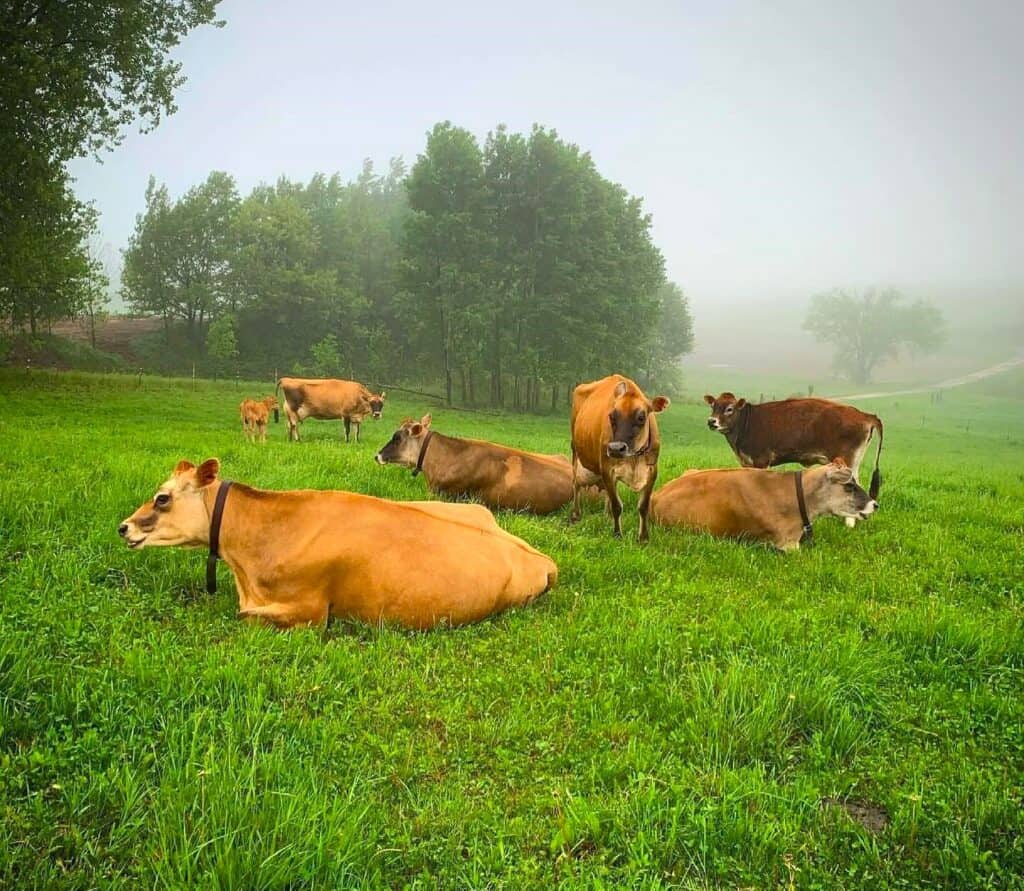
“St. Isidore the Farmer is considered the patron saint of farmers and rural communities,” she said. “When I started the farm, I figured I needed all the help I could get.”
After she moved to Wisconsin, Orth said she eventually began getting her hair cut by Chance’s mother.
“Chance’s mother has been cutting my hair for literally 20 years,” she laughed. “Throughout that time, we talked about how she grew up farming, and her favorite cow on her farm growing up was actually named Inga. I think it’s really funny that now I’m her daughter-in-law. It’s been a wonderful marriage with Chance to come into.”
After being a traditional certified organic farmer for several years after starting St. Isidore’s Dairy, Orth said she came to a “sad realization” regarding the industry.
“In 2016 or 2017, pretty much after Chance and I got married, I realized I could not be profitable with a dairy farm,” she said. “What’s happening is the price of milk has been stagnant for dairy farmers for generations. At the same time, the cost of living and the cost of farming have gone up exponentially. We are losing farms at an alarming rate and losing small farms at an even more alarming rate – it’s getting dire.”
Because of this, Orth said she knew she had to pivot to survive the dairy life.
“I realized I could not make a living and could not keep farming with the price of milk, so I downsized my herd to six animals,” she said. “I built a creamery right inside of my existing barn, and I was all set to go.”
That’s when, Orth said, tragedy struck.
“Two days before the creamery was finished, our barn burned down (in 2019),” she said. “That was obviously a setback, but we built everything again from scratch. We figured 2020 was going to be our best year ever, and then COVID-19 hit.”
However, Orth said the pandemic gave her and Chance “plenty of time to get things done around the farm.”
“I started making cheese as a way to save my farm,” she said. “I also want to be an example for other farmers. You need to think differently about what you have now. I used to think ‘poor me,’ because I only had so many acres and so many opportunities, but I developed those opportunities into something really successful.”
Though there currently isn’t a storefront at St. Isidore’s Dairy, Orth said the farm’s cheese is available in select stores.
She said she also attends various events throughout the year.
“We’re at the downtown Eau Claire Saturday farmers market, and every Saturday, we’re at the Winona, Minnesota, farmers market,” she said. “You can also find us at Fromagination, which, if you get to Madison, you have to go to – it’s the best cheese shop in the world. They give you samples of everything.”
It’s all in the milk
Orth said Jersey cow milk is special due to its high nutritional value, creamy texture and unique taste, making it a favored choice for many.
She said the milk is known for being higher in protein, calcium and vitamin B12 than milk from other dairy breeds.
Additionally, Orth said milk from Jersey cows is characterized by a higher butterfat content, contributing to its rich, creamy taste and texture.
“Our Jersey cows are milked twice daily using a bucket milking system,” she said. “By handling the milk gently, it maintains its integrity. The milk is poured by hand into our bulk tank, where it is cooled and stored until it’s ready to be transformed into cheese.”
Though the farm uses a bucket milking system, Orth said she and Chance have a vacuum line going through the barn that supports their efforts.
“I’m not actually milking by hand, but it’s pretty much as close to (milking by hand) as you can get,” she said. “We want to keep the integrity of the milk. When milk is being pumped a lot, the fat globules in the milk break up. Because our farm is so small, and because I take my job really seriously, I want to make sure everything is perfect from start to finish. I milk in buckets, and that also allows me to know exactly what’s happening with that cow.”
As an example, Orth said on a recent morning milking session, she almost had to ask for Chance’s assistance to empty the milk buckets because they were so heavy.
“The cows went to a different pasture (the night before),” she said. “There was so much milk in the buckets – it’s exciting to see. You can see how the (grass-fed) diet impacts the cows.”
During the grazing season, Orth said the cows are moved twice daily to fresh pasture, where they graze on native Wisconsin grasses, clovers and wildflowers.
“This allows the cows to live a natural life outdoors, while also providing important habitat for grassland birds and pollinators,” she said. “The grass-fed diet also provides a unique color and flavor to each truckle of our cheese. In the winter months, the cows enjoy dry hay baled from the farm.”

This way of farming, Orth said, makes St. Isidore’s Dairy’s milk “a little bit more unique, and it makes the flavor just remarkable.”
“I’m not using any fuel or tractors or anything out in my pasture, except for an occasional clipping every once in a while,” she said. “What happens is, the cows are harvesting their own food and spreading their own manure and working together with the ecosystem. I always let people know when you’re supporting a grass-based farm – like St. Isidore’s or a grass-based beef farm – you’re also supporting that entire ecosystem around that farm. That’s a wonderful thing.”
Clothbound cheddar
Orth said clothbound cheddar is a British-style cheese – and is most well known for perhaps being the original cheddar recipe.
“It takes about seven hours, (from) start to finish, to make a batch of cheese,” she said. “It’s a series of heating the milk gently. As a raw-milk cheese, I don’t pasteurize anything. As I’m heating the milk gently, I’m adding some cultures and different enzymes as well.”
From there, Orth said she tends to the cheese to make sure everything is going as planned.
“I then press the cheese into a form to create a 20-pound truckle,” she said. “From there, I wrap it with cheesecloth. I then take melted butter and rub that all over the cheesecloth to adhere it (to the cheese), but it also starts the microbes eating the butter to help create the flavor of our cheese. It’s basically the same recipe people have used since the beginning of time.”
Orth said St. Isidore’s Dairy is the smallest licensed dairy farm in the state.
“For example, (today), I processed 567 pounds of milk, which is probably about as much milk as a normal-sized creamery would spill on the floor daily,” she said. “I am really small, but that means I get quality control from literally the birth of these animals when they’re coming out of their mother – raising them from the ground up.”
Orth said this also allows her to be in complete control of the cheese-making process.
“It helps make sure that I’m bringing the best product,” she said. “I only make cheese from the best quality milk because I take it so seriously.”
A love of cows
Orth said for now, she is happy running things as is with Chance and their six Jersey cows.
But, she said, she’s not opposed to some small growth in the future.
“I love the fact that I can do it from start to finish on my own if needed,” she said. “I love having my husband here to help me, but yes, I would like to maybe add a few more Jerseys in the future. I am also a cow lover, so if you show me a picture of a cow that has a really cute face, of course, I need to bring her to the farm.”
Orth said though she could see herself adding a few more cows, she also has to think about life/work balance.
“Finding that work/life balance is both fun and hard at the same time,” she said. “There is something wonderful to staying a smaller size, too.”
For more information on St. Isidore’s Dairy, visit stisidoresdairy.com or find it on Facebook.
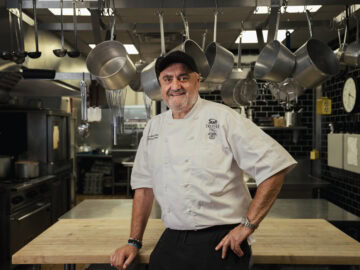 New Oshkosh Italian eatery nearly prepped for grand opening
New Oshkosh Italian eatery nearly prepped for grand opening Packers Athletic Club to become newest addition to Titletown
Packers Athletic Club to become newest addition to Titletown


